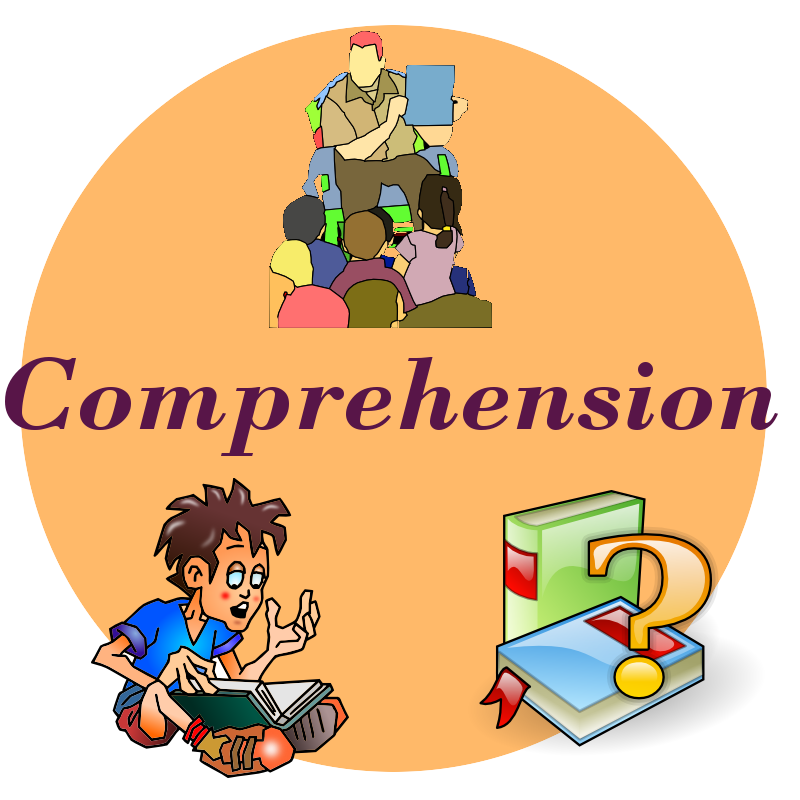Table of Contents
COMPREHENSION COMPETITIVE EXAM QUESTIONS
DOWNLOAD MOBILE APPLICATION TO LEARN MORE: COMPREHENSION COMPETITIVE EXAM QUESTIONS
Directions (1-10): Read the following passage carefully and answer the questions given below it. Certain words/phrases have been printed in bold to help you locate them while answering some of the questions.
Though the Cold War has ended, selective tactics are still continuing for ensuring the military and economic dominance of developed countries. Various types of technology denial regimes are still being enforced which are now being mainly targeted against developing countries like India.
Today, we in India encounter twin problems. On one side there is a large-scale strengthening of our neighbours through supply of arms and clandestine support to their nuclear and missile programmes and on the other side all efforts are being made to weaken our indigenous technology growth through control regimes and dumping of low-tech systems, accompanied with high commercial pitch in critical areas. Growth of indigenous technology and self-reliance are the only answer to the problem. Thus in the environment around India, the number of missiles and nuclear powers are continuously increasing and destructive weapons continue to pile up around us, in spite of arms reduction treaties. To understand and the implications of various types of warfare that may affect us, we need to take a quick look at the evolution of war weaponry and the types of warfare. I am highlighting this point for the reason that in less than a century we could see change, in the nature of warfare and its effects on society. In early years of human history it was mostly direct human warfare. During the twentieth century up to about 1990, the warfare was weapon-driven. The weapons used were guns, tanks, aircraft, ships, submarines and the nuclear weapons deployed on land/sea/air and also reconnaissance spacecraft. Proliferation of conventional nuclear and biological weapons was at a peak owing to the competition between the superpowers. The next phase, in a new form, has just started from 1990 onwards. The world has graduated into economic warfare. The means used is control of market forces through high technology. The participating nations, apart from the USA, are Japan, the UK, France, Germany, certain, South-East Asian countries and a few others. The driving force is the generation of wealth with certain types of economic doctrine. The urgent issue we need to address collectively as a nation is, how do we handle the tactics of economic and military dominance in this new form coming from the backdoor? Today technology is the main driver of economic development at the national level. Therefore, we have to develop indigenous technologies to enhance our competitive edge and to generate national wealth in all segments of economy. Therefore, the need of the hour is: arm India with technology.
DOWNLOAD MOBILE APPLICATION TO LEARN MORE: COMPREHENSION COMPETITIVE EXAM QUESTIONS
1. Why do certain countries use selective tactics against developing countries?
(a) To help developing countries gain military and economic independence
(b) To help developing countries govern themselves and be economically independent
(c) To ally with developing countries to dominate over the developed countries
(d) To curtail their domination over developing countries
(e) None of these
2. Which are the issues of great concern that India is facing at present, according to the author of the passage?
(i) The supply of high-tech weaponry by other countries to India’s neighbours who are likely to use the same against India
(ii) Other countries secretly helping India’s neighbours to strengthen their nuclear might
(iii) Obstruction of India’s genuine efforts to develop its own nuclear technology
(a) (i) & (ii) only
(b) (ii) & (iii) only
(c) (i) & (iii) only
(d) All (i), (ii) & (iii)
(e) None of these
3. The striking difference in warfare before and after 1990 was the shift from:
(a) guns, tanks, etc to nuclear weapons
(b) ships and submarines to spacecrafts
(c) weaponry to economic warfare
(d) economic forces to high technology-driven warfare
(e) None of these
4. What, according to the author, is the solution to our problems in the international field?
(i) Importing up-to-date technology and nuclear equipments from developed counties
(ii) Developing our own in-house technology
(iii) Eliminating dependence on developed countries.
(a) (i) & (ii) only
(b) (i) & (iii) only
(c) (ii) & (iii) only
(d) All (i), (ii) & (iii)
(e) None of these
5. What, according to the author, is the immediate problem to be collectively resolved by our country?
(a) To counter the dominance of developed countries through money and muscle power
(b) To eradicate poverty and become economically self-reliant.
(c) To control the exorbitant rate of population growth
(d) To develop indigenous technology to manufacture mightier weapons
(e) None of these
DOWNLOAD MOBILE APPLICATION TO LEARN MORE: COMPREHENSION COMPETITIVE EXAM QUESTIONS
Directions (6-8) : Choose the word which is MOST nearly the SAME in meaning as the word printed in bold as given in the passage.
6. Reconnaissance
(a) Investigation
(b) Reserved
(c) Recognisable
(d) Remedy
(e) Attack
7. Proliferation
(a) Explosion
(b) Devastation
(c) Propogation
(d) Abundance
(e) Extraction
8. Evolution
(a) Magnification
(b) Expansion
(c) Progression
(d) Modification
(e) Changing
Direction (9-10) : Choose the word which is MOST OPPOSITE in meaning of the word printed in bold as given in the passage.
9. Indigenous
(a) Local
(b) Domestic
(c) Abroad
(d) Foreign
(e) Exported
10. Dominance
(a) Aggression
(b) Submission
(c) Assertion
(d) Ignorance
(e) Lethargy
DOWNLOAD MOBILE APPLICATION TO LEARN MORE: COMPREHENSION COMPETITIVE EXAM QUESTIONS
ANSWERS:
- e
- d
- c
- c
- e
- a
- c
- c
- d
- b
DOWNLOAD MOBILE APPLICATION TO LEARN MORE: COMPREHENSION COMPETITIVE EXAM QUESTIONS

